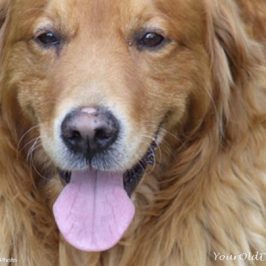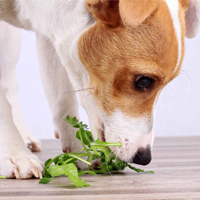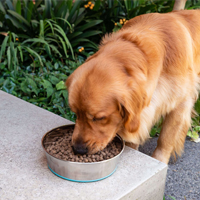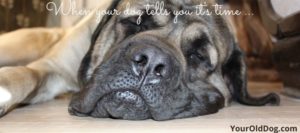
Tips for Controlling Your Dog’s Shedding
While shedding is a big complaint for dog owners, many just don’t take advantage of the helpful tips to reduce the problem.
Through the years, I have had many heavy shedders and I’ve learned quite a bit about what contributes to the problem (or at least slow it down).
Normal shedding is seasonal and happens twice a year. Come spring, dogs lose their thick winter coats which are replaced with a shorter, thinner coat for summer. When fall returns, dogs rid their summer coat to accommodate a heavier coat for winter.
Unfortunately, seasonal hair loss is often overcome with heavy shedding all year and this can happen for a number of reasons:
- Nutritional needs are not being met
- Parasites such as fleas cause scratching and if the dog is sensitive to a flea bite, flea allergy dermatitis develops
- Sensitivity to chemical flea and tick treatments (please don’t use these)
- Environmental or food allergies can cause excessive hair loss for dogs
- Health problems including a weakened immune system
- Stress and fear
What Can You Do
- First and foremost – feed a good brand of all natural dog food with high quality protein as the main ingredient.
- Add an Omega 3 fatty acid supplement.
- Use only all natural flea treatments.
- I’ve found that food allergies and sensitivities were easily corrected when a decent, quality food and diet were introduced.
- Environmental allergies were also easily corrected by regular grooming including hygiene.
- When dogs have ongoing health issues, they will definitely shed more. If you’re uncertain whether or not you dog has any health concerns, a trip to your holistic vet, probably isn’t a bad idea. Once the health problem is corrected, you should see a reduction.
- Stress and fear can be triggered by a variety of things including thunder phobia and loud noises, fear of yelling or of a particular person, fear of being hurt, fear of other animals, etc.
Stress and fear can cause the dog to shed excessively and it’s important to work on the dog’s anxiety issues first in an effort to control the problem later. - Don’t over vaccinate your dog – stick to the absolute necessary requirements – ONLY!
- A quick brushing every day. I have to admit, I’ve never been real good with daily brushings. However, if any of my dog’s were routinely shedding heavily, it became minimal once the other problems were corrected. My friends over at petnewsandviews.com ran a contest on the FURminator that recieved some great responses. However, I would only consider using this on dogs with a very thick coat or undercoat.
Dog owners should become familiar with their own dog’s normal pattern. Keep in mind that you should see a change with any improvements you make such as better diet, including fatty acids, etc. (and assuming you have all health issues under control).
Although several breeds will shed all year, if they are healthy, they will lose most of their coat during the typical seasonal periods such as spring and fall.










